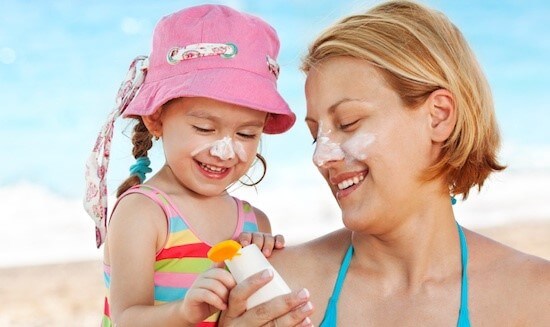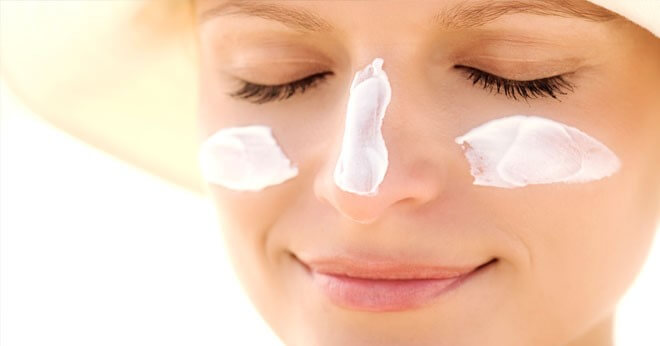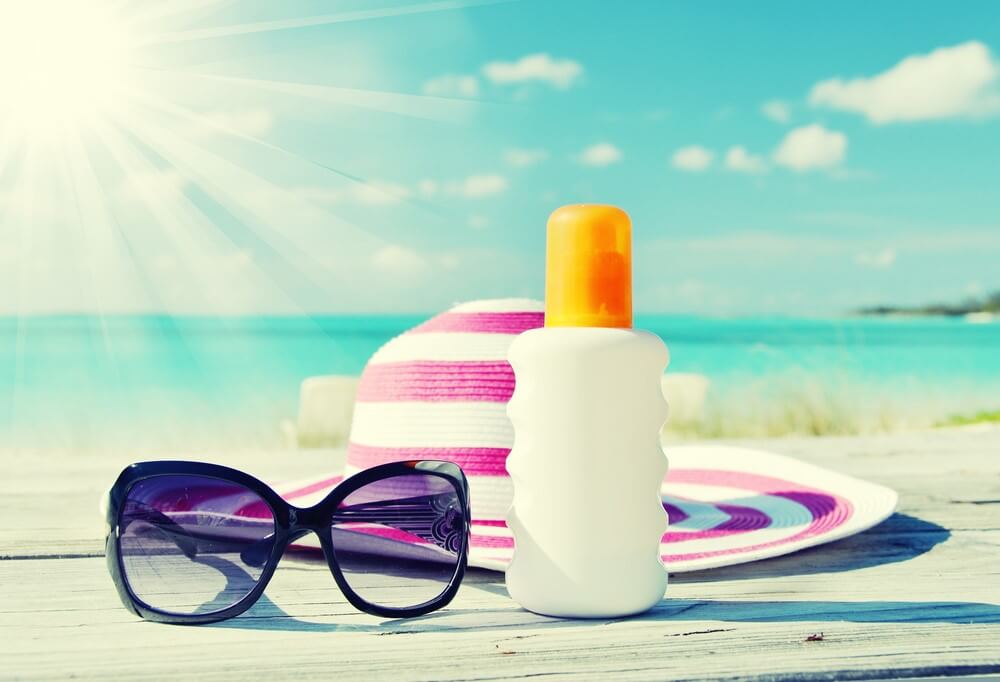Protect your Eyes this Summer!
The Central Texas summer is known for a lot of heat and sunshine. And by a lot, we mean just enough to drive you a little bit crazy. The kind of crazy that makes you thank your lucky stars for swimming pools, Barton Springs, and the beautiful bodies of water that Austin and its surrounding towns have to offer. But what we forget is that all that time spent keeping cool near the water leaves us exposed to harmful UV rays. Getting through the Central Texas summer means frequent exposure to powerful sunlight on a regular basis, so whether or not you spend your free time outdoors – there is no better time to review the realities about the damage that ultraviolet radiation can inflict on one’s skin and then take precautions to prevent it.

Be careful when spending time in the blistering Texas sun.
People who spend a lot of time outdoors run the risk of suffering from more than just heat exhaustion or heat stroke. Repeated exposure to ultraviolet (UV) radiation places you at risk for various forms of skin cancer and eye diseases, such as cataracts. The number of skin cancer cases in the United States continues to increase each year. Skin cancer is the most commonly occurring cancer in the United States. The American Cancer Society estimates that over one million cases of skin cancer are diagnosed each year. The most serious form of skin cancer is Melanoma. An estimated 68,720 Americans will be diagnosed with Melanoma this year and about 8,650 of those people will die from the cancer. UV radiation also damages the sensitive retinal and corneal areas of the eyes. Long term exposure can cause macular degeneration, cataracts, pterygium, and cancer of the eyelids. These disorders affect vision and in some cases can cause blindness. Skin cancer is not usually the result of a single, painful sunburn. Farmers, landscapers, and others whose occupations require long hours working outdoors are at a high risk for prolonged exposure to UV radiation. Small changes occur to the skin each time it is exposed to sunlight and repeated exposure can cause progressive damage to the skin’s biological structure. The sun’s rays are most intense and damaging during the summer months. The greatest exposure occurs from 10:00 a.m. until 4:00 p.m., but you can still get a sunburn during cloudy weather, other seasons, and other times of the day.
Your eyelids matter!
When putting on sunscreen, eyelids are often ignored. You might try to avoid getting the sunscreen in your eyes or feel that since you wear sunglasses, you don’t need to apply it around the eyes but because eyelids have thin, delicate skin, they are quite prone to cancer. Untreated, eyelid cancer can lead to blindness or spread into the nasal and orbital cavities.
Eyelids take up such a small amount of skin surface that most people don’t connect eyelids with skin cancer. Surprisingly, skin cancers on this small space make up about 10 percent of all basal cell carcinomas, squamous cell carcinomas and melanomas according to the Skin Cancer Foundation. The large majority of skin cancer on the eyelid is basal cell carcinoma (about 90%) with the second largest type being squamous cell carcinoma. About one percent of eyelid cancer is melanoma. Don’t risk these outcomes and make sure you apply sunscreen to your eyelids any time they will be exposed to direct sunlight for long periods of time.
Signs and Symptoms of sun damage
Tumors on the eyelids often grow under the surface of the skin, making it difficult to detect. Some of the signs you might notice are:
- An unexplained loss of eyelashes
- Red eye or inflammation of the eyelids that doesn’t go away or doesn’t respond to treatment
- A small bump that doesn’t go away
- Lesions or growths with irregular borders
In most cases, lesions on the eyelid are painless and benign. If they look similar to a scar, grow or change shape and bleed or crust you will want to seek treatment. If they do not clear up with treatment. If you think you may be experiencing these symptoms, make an appointment to see Dr. Paul immediately.
Who is at Risk?
Everyone is vulnerable to damage from UV radiation, however people who burn easily and rarely tan, have freckles, light complexions, blonde or red hair, and/or blue or gray eyes have a greater risk of developing skin cancer. Early detection of skin cancer is truly the first step for successful treatment. If you notice the growth of a new mole, discoloration change to an existing mole on your eyelids, call our office at 512-642-5050 to see Dr. Paul as soon as possible.
Protective Measures
Areas of the body that are most at risk to exposure of UV radiation are the back of the neck, ears, face, eyes, and arms. These and other body parts can be easily protected by wearing proper clothing, sunglasses, and sunscreen. You can reduce your risk by taking precautions and avoiding repeated exposure to the sun.
You will want to find sunscreen options that are SPF 15 and above for the best protection. Sunglasses are also very important. You want to look for sunglasses that provide UV protection. Check to make sure they offer protection from both UVA and UVB rays. Keep in mind that sunglasses should be worn year round, not just in the summer. Make sure the lens are large enough to cover your entire eye area.

Hats also provide excellent protection from the sun’s rays. We suggest wearing hats with at least a 3 inch brim; these hats will block as much as half of the sun’s rays from reaching your eyes.
Now that you have the best tips to keep your eyelids and skin safe this Texas summer, have fun!

